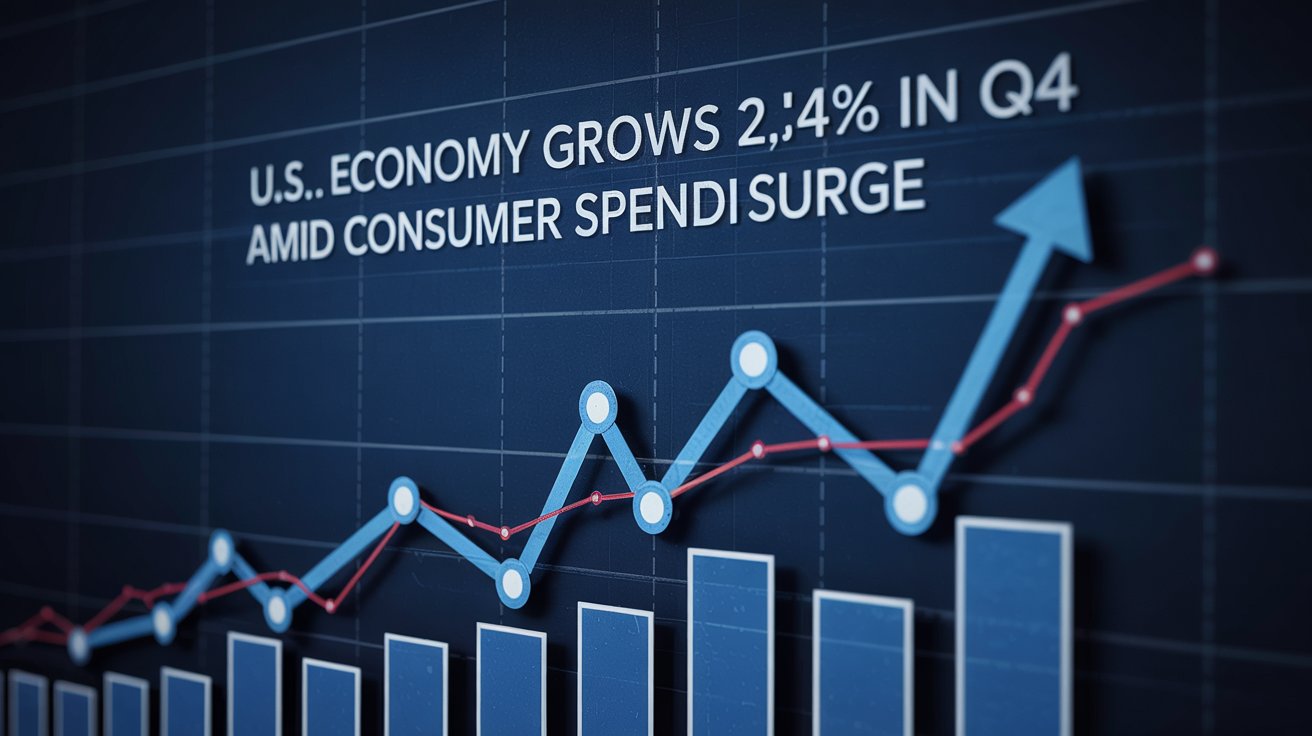The U.S. economy expanded by 2.4% in the fourth quarter of 2024, marking a significant boost primarily fueled by consumer spending and personal income growth. This economic surge comes despite persistent concerns over inflation, trade deficits, and business investment slowdowns. Understanding these factors helps individuals, businesses, and policymakers navigate the evolving financial landscape.

How Consumer Spending Drove Economic Growth
Why Did Consumer Spending Surge?
Consumer spending, which drives nearly 70% of the U.S. economy, increased by 4.2% in Q4 2024—the highest in nearly two years. Several key factors contributed to this boost:
- Increased Disposable Income: Personal income rose 4.6%, providing more spending power.
- Strong Labor Market: Despite economic uncertainties, unemployment remained low.
- Holiday Season Boost: Retail sales saw a sharp increase due to holiday shopping.
- Higher Spending on Services: Travel, dining, and entertainment industries saw significant gains.
Spending Breakdown (Q4 2024)
| Category | Percentage Growth |
|---|---|
| Retail Sales | 3.8% |
| Travel & Hospitality | 5.2% |
| Dining & Entertainment | 4.9% |
| Healthcare & Essentials | 3.5% |
Consumers continue to drive economic growth, but long-term sustainability depends on wage growth and inflation control.
Business Investment Declines – What It Means for Growth
Why Did Business Investment Drop?
Business investment declined for the first time in two years, particularly in manufacturing and equipment purchases. Key reasons include:
- Market Uncertainty: Companies hesitate to expand amid potential economic slowdowns.
- Supply Chain Disruptions: Continued effects from global shortages limit growth.
- Higher Interest Rates: Increased borrowing costs reduce capital investment.
Impact of Lower Business Investment
- Slower job creation in industries reliant on capital expenditure.
- Potential delays in technology and infrastructure growth.
- Reduced corporate expansion plans in key sectors.
While consumer spending fuels short-term growth, business investment is necessary for long-term economic stability. Companies will need greater confidence in market conditions to resume major investments.
Trade Deficit Widening: A Growing Concern?
Why Is the U.S. Trade Deficit Increasing?
The U.S. trade deficit widened as imports outpaced exports, impacting GDP growth. Major reasons include:
- Stronger U.S. Dollar: Makes American goods more expensive overseas.
- Lower Global Demand: Some international markets saw weaker demand for U.S. products.
- Supply Chain Issues: Delays continue to affect manufacturing and exports.
Trade Balance Overview (Q4 2024)
| Factor | Impact on Trade |
| U.S. Dollar Strength | Increases imports, decreases exports |
| Global Demand Drop | Reduces exports |
| Supply Chain Delays | Slows production & shipping |
A widening trade deficit can slow economic growth, as more money leaves the country than comes in through exports. Balancing trade policies may be crucial in 2025.
Inflation & Federal Reserve Response: What to Expect?
How Inflation Affects the Economy
Inflation remained a significant concern in Q4, rising to 2.3%, above the Federal Reserve’s 2% target. Key inflation drivers:
- Higher Housing Costs: Rents and home prices continue to rise.
- Healthcare & Essentials: Medical services and basic goods saw price hikes.
- Energy & Food Costs: Unstable supply chains led to fluctuating prices.
Federal Reserve’s Strategy
The Federal Reserve remains cautious in adjusting interest rates, balancing economic growth and inflation control. Potential policy decisions for 2025:
- Maintain Higher Rates: To curb inflation and stabilize prices.
- Gradual Rate Cuts: If inflation falls, rates may decrease to stimulate growth.
- Monitor Labor & Consumer Trends: Ensuring stability in spending and employment.
Higher inflation can erode purchasing power, while Federal Reserve actions will shape the economic outlook in the coming months.
2025 Economic Outlook: Will Growth Continue?
Key Economic Predictions for 2025
Experts forecast a slower growth rate of 1.5% in early 2025, with possible slowdowns due to:
- Global Market Uncertainties: Geopolitical factors affecting trade and investment.
- Consumer Debt Levels: Rising credit card debt may limit future spending.
- Government Policy Adjustments: Changes in taxation, trade, and spending policies.
U.S. Economic Future 2025
[2025 U.S. Economy]
|
--------------------------------------
| | |
[Consumer Spending] [Business Growth] [Trade & Inflation]
| | |
[Income & Jobs] [Investment Trends] [Policy Adjustments]The U.S. economy may experience slower growth, but strong consumer spending and wage increases can help maintain stability if inflation and investment challenges are addressed.
Conclusion: Key Takeaways for Readers
- Q4 2024 GDP Growth: 2.4%, primarily driven by consumer spending.
- Consumer Spending Up: 4.2%, with strong retail and service sector gains.
- Business Investment Decline: Due to uncertainty and higher borrowing costs.
- Trade Deficit Expansion: Imports exceeding exports create economic pressure.
- Inflation Risks: 2.3% rate may impact Federal Reserve policies.
- 2025 Outlook: Slower growth expected, but consumer trends remain strong.
The U.S. economy remains resilient, but 2025 will depend on inflation control, business investment recovery, and balanced trade policies.
[USnewsSphere.com / bea]





